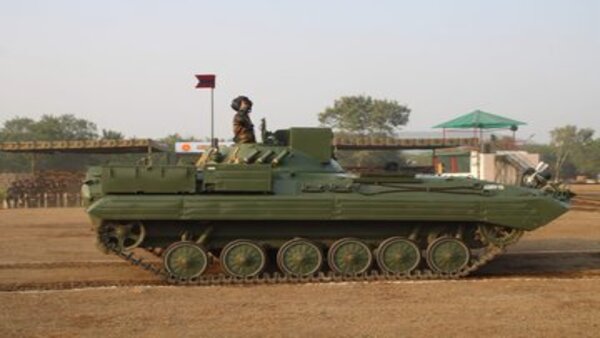
Lord Krishna was born in 3112 BCE: How is He still mythology?
[ad_1]
India
oi-Vicky Nanjappa


Krishna’s birth can be dated to 27th July, 3112 BCE. When you are able to give a precise date to an event which is recorded in writing, as history, by a traceable author, then it is no more a figment of imagination and assumption or a mythos.
New Delhi, Aug 22: On August 18 and 19, Krishna Janmashtami was celebrated with grandeur and fervour. It was also the 5,134th birthday of Lord Krishna.
For years now, many have continued to call the Mahabharata a mythological event and pinned most of our culture, history and heritage as a myth.

If you can fix the lifetime of a person in a calendrical system then he is no more a myth, say Bharath Gyan founders Dr. D K Hari and Dr. D K Hema Hari.
“We need to understand that the word mythology originated with reference to Greek literature to mean that which is non-real. When the colonial Europeans came here, they already had an idea of Greek mythology. They ended up imposing the same term on literature here without understanding about Indian style of writing,” Hari and Hema tell OneIndia, while adding that, in doing so they imposed this terminology of Europe on India and her culture.
 Janmashtami 2022: India celebrates birth of Lord Krishna with great pomp and fanfare
Janmashtami 2022: India celebrates birth of Lord Krishna with great pomp and fanfare
The word ‘mythology’ is based on the word myth, which in turn comes from the Greek word mythos, which originally meant exaggerated, unearthly legends and fables which were transmitted by word of mouth and whose origins could not be traced. This later has come to stand for a set of beliefs or assumptions about something as the dictionaries will tell us today.
This word ‘mythos’ in turn has a similar word in ‘Samskrt’. The word is ‘mithya’. This again means not true, illusory or there may be some small point from which a story has been built up, Dr Hari and Hema say.
What has happened is that, the colonial Europeans came here and imposed their idea of what mythology is, in our Indian literature. This is because, for one, the antiquity of our stories go back by many millennia, whereas they did not have comparable records of a civilization in Greece or other parts of Europe then. So, they could not stomach the fact that India had an advanced civilization prior to their earliest records by two to three millennia.
The Bharath Gyan founders say that if the Europeans had to rule this land of India as a white man, they had to show that they were superior in every way including antiquity and history. Hence, every Indian, ancient literature was dubbed as mythology to indicate they were fabrications, imaginations, exaggerations and were essentially untrue.
In their records, the first contact between Europe and India was the march of Alexander of Macedonia to India, in the year 326 BCE. They termed him as Alexander the Great and extolled him as the first person to have come to India from Europe and lifted India into a civilized state by giving India the Hellenistic culture which is another term for Greek culture.
Anything before the date of 326 BCE in India, they dubbed it as pre-historic and pushed all literature about those times, into the realm of mythology, Hari and Hema add.
Dr. Hema says that they created a narrative in 1820s to say India had nothing – neither culture nor history prior to that time window. Archaeological excavations of Harrappa, Mohenjo-daro etc. had not taken place then, as Harappa was discovered only in 1870s and Mohenjo-daro and Harappa were further, properly excavated only a century later in 1920s.

Now it has been proven beyond doubt that we had great civilizations such as Mohenjo-daro and Harappa and a few more 1,000s of archeological sites along the different rivers and coasts of the Indian land to show the truth that we had advanced, maritime trading civilizations in our land a couple of millennia before the invasion of Alexander, Hema explains.
Also, what the colonial Europeans had glossed over was the fact that Indian literature, other than the Veda which were transmitted orally, were documented and were passed on in writing. Their authors were known and hence traceable. These authors, in the case of Ramayana and Mahabharata, have explicitly written in their works that these works are itihasa -meaning it thus happened.
In other words, they have written in their works that they are writing the history of events that took place in their times, i.e. these events were recorded contemporaneously by the respective authors of the 2 itihasa. They were not written many centuries or millennia after the events. Whereas, even Alexander’s life and travels after his conquest of Persia, march up to India, return from India and his death in Babylon were chronicled many centuries after his lifetime and still continue to remain ambiguous and contradictory.
So, how can Ramayana and Mahabharata be called mythology?
Furthermore, Dr. Hari says that these itihasa texts of India have astronomical data relating to the day/night of those events. Like a diary log with a date – an astronomically verifiable date.
We today, have modern archaeo-astronomy tools such as Planetarium software which makes it easier for us to look forward and backward in time using star configurations. Therefore, using the star configurations or astronomical dates in the itihasa texts, we can precisely find the calendrical dates for these events, from the perspective of Indian geography, where they had taken place.
Krishna’s birth using all this data can be dated to 27th July, 3112 BCE.
When you are able to give a precise date to an event which is recorded in writing, as history, by a traceable author, then it is no more a figment of imagination and assumption or a mythos, Hari says, while adding that then, it becomes a historic fact.
India has always known, commemorated and celebrated these events at the same time each year as per its traditional calendars.
Now, we are able to map the traditional dates of these events in the Gregorian calendar too, which is in popular use currently. We are also able to fix the geography of these historical events. All these give it that much more credence that the events have happened both in timeline and also physically on the land of Bharat, the Bharath Gyan founders say.
Once this is done, we should no longer call it Hindu or Indian mythology, they add. These Indian literatures are our history and legends.
Recently we celebrated Azadi Ka Amrit Mahotsav that is 75 years since the departure of the British. The British left India 75 years ago but we continue to carry the colonial mental baggage of calling our history as mythology.
It is now time to shed this colonial veil that is hiding and distorting the true picture of India and look at our history from our perspective in a logical, scientific and rational way, they add. Then we will get down to saying that Krishna is indeed a historical personage.
For, in our land we call Krishna as an ‘Itihasa Purusha.’ We do not call him a ‘Kalpanik Purusha.’
The word ‘itihasa’ has three components to it – iti -ha-asa, meaning ‘it thus happened’. Our own texts say “it thus happened” which means it is historical, Hema and Hari say.
A couple of centuries ago, when the colonial historians came here, they used so called scientific methods and reduced our historic personages to mythology. In the last 200 years, science has evolved so much. Using the current, scientific technologies we are able to see that these personages were indeed historical as our texts have claimed them to be and not mythological, they add.
So, it is now time that we discard the term Hindu mythology for Indian literature, but instead use a more apt term, “Indian legends”, which is a respectful term for our civilisational values, Dr Hari and Dr. Hema say.
[ad_2]
Source link


